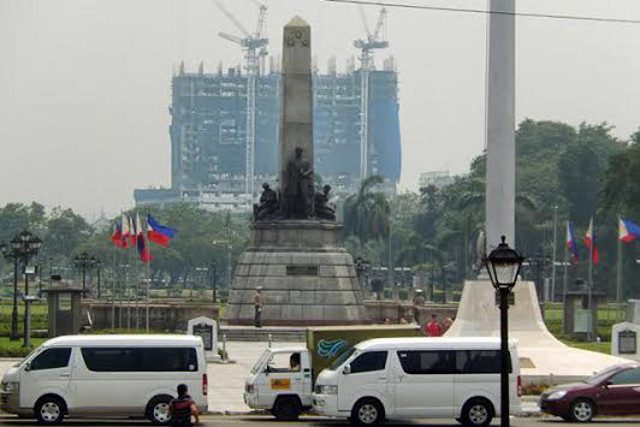SUMMARY
This is AI generated summarization, which may have errors. For context, always refer to the full article.

MANILA, Philippines – The historical agency slammed for not stopping the construction of the controversial Torre de Manila condominium in Manila said it is the city government’s responsibility to enact local ordinances to protect cultural landmarks, including the historic Rizal Monument.
While it has its own guidelines on the preservation of monuments, the National Historical Commission of the Philippines (NHCP) said it is the local government which can best determine the appropriate building height restrictions to ensure that historical landmarks will be protected.
“Local legislation is needed because national monuments vary in size, height. It is the local government which can best determine the appropriate height [of buildings] and designate views and sightlines that should be protected,” lawyer Jose Manuel Diokno, who represents the NHCP, said during the 6th round of oral arguments in the Supreme Court on Tuesday, September 1.
The High Court is tackling the September 2014 petition filed by the Knights of Rizal, seeking to have the Torre de Manila demolished because it mars the sightline of the Rizal Monument.
The 49-story condominium, which sits on private property well outside the protected area of the Rizal Park, can be clearly seen rising behind the monument of the national hero.
In last week’s hearing, the Solicitor General – which used to represent the NHCP – argued that the historical commission violated its own 2011 guidelines when it refused to issue a cease and desist order (CDO) against the construction of Torre de Manila.
NHCP guidelines state that national monuments should be given prominence, and that one measure for preserving dominance is to “keep vista points and visual corridors to monuments clear for unobstructed viewing appreciation and photographic opportunities.”
Diokno, however, argued that the NHCP has the power to issue a CDO only when the physical integrity of the landmark is threatened.
In the case of the Rizal Monument, the Solicitor General insisted that “physical integrity” should necessarily include its sightline. But Diokno argued that the term should not be given any special meaning other than its “material body.”
Not all-encompassing
In the first hearing on the Torre de Manila case, SC Justice Francis Jardeleza questioned the legal basis of petitioner Knights of Rizal. The group had cited the NHCP guidelines to bolster its opposition to the condominium project.
But Jardeleza said then that the guidelines had no legal weight because they were not published to have the effect of a law.
In Tuesday’s hearing, Jardeleza asked NHCP chair Maria Serena Diokno why the commission did not publish the guidelines to have legal weight.
Diokno replied that even if published, they would remain recommendatory in nature.
She added that it is up to the local governments to enact zoning guidelines or local ordinances specific to the landmarks or cultural artifacts that they want to protect.
“For the guidelines to take effect, local ordinance is still necessary. The composition, nature, and height of monuments vary from town to town, or city to city. We can’t make one general rule that will be all-encompassing for all parts of the country,” Diokno said.
She added that it would be “impossible” for the agency to anticipate the kind of landmarks that each city would want to protect and its possible effect on the surrounding areas.
Because of this, the NHCP urged local government units to legislate their own zoning regulations and ordinances particular to their specific circumstances.
Diokno told the SC that this was explicitly stated in its guidelines, part of which read:
It is highly recommended that towns and cities formulate zoning guidelines or local ordinances for the protection and development of monument sites and the promotion of a clean and green environment, and strictly implement these laws, especially in places where important monuments and structures are located.
A buffer zone should be provided around the vicinity of monuments/sites, and should be made part of the respective city or municipal land use and zoning regulations through local legislation.
Diokno cited the same provisions in the November 2012 letter she sent to DMCI Homes, the developer of Torre de Manila.
In the letter, Diokno recommended that the Manila city government enact “an ordinance designating a buffer zone around Rizal Park and prescribing guidelines building development” to prevent a similar “dilemma” in the future.
The city of Manila has its own zoning laws that impose limitations on buildings in the university cluster, where the Torre de Manila stands.
DMCI has obtained an exemption from the zoning limits, but the petitioner and several SC justices have questioned the process by which DMCI obtained the permits from city officials. (READ: Rule of law not followed in Torre de Manila permit – SC Justice Jardeleza) – Rappler.com
Add a comment
How does this make you feel?
There are no comments yet. Add your comment to start the conversation.